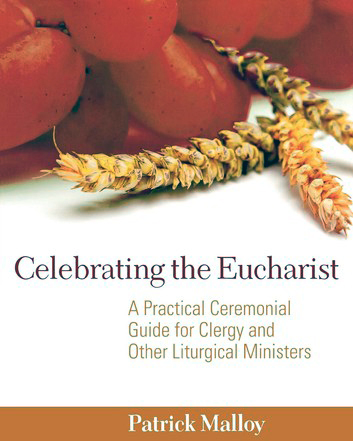
Most liturgical ministries are carried out in a very public way, for the entire congregation to see. The priests and deacons, the acolytes and readers, the musicians, the ushers, and almost all the rest do their work when everyone is there. The altar guild, however, is different. Most of the altar guild’s work happens in the days between Sunday and Sunday when no one is there to see. Even on Sunday, hardly a soul sees what the altar guild does to make the liturgy possible. It’s a behind-the-scenes ministry, and that can make it an unappreciated ministry.
When most Episcopalians think of the liturgy, they think of the words. We sometimes say that the Prayer Book defines us, and we can take that to mean the words on the page. But the liturgy is far more than words. It is an event, and it is the altar guild that sets the stage on which the event unfolds.
For many years, I joined the people of St. John on the Mountain in Bernardsville, NJ, for Sunday Eucharist. The altar guild there was, like most others, a dedicated behind-the-scenes group who made it possible for the rest of us to celebrate the liturgy with dignity and grace. The parish’s commitment to liturgical beauty is so marked that it commissioned an entire set of silver altar ware — everything from host boxes to candlesticks — from J. Wippell and Company, the British supplier of liturgical vestments and vessels. The design is of such high quality that Wippell markets the “Bernardsville” collection of altar ware: the only named collection in its catalogue. My thanks to Jane Mercer, a member of that altar guild, who invited me to share excerpts from my book, Celebrating the Eucharist, to highlight the importance of every altar guild’s ministry.
At the most pragmatic level, the Sunday liturgy is the only time in the regular life of a community when everyone gathers. From Sunday to Sunday, individual members of the community and subgroups within the community live out their particular vocations within the baptismal vocation. On Sunday, however, the Body of Christ — precisely as the Body, precisely as the community of the baptized in all of its diversity — experiences itself in its totality. In this way, the Sunday Eucharist is a pivotal moment, both in the church’s expression of what it is and in being formed into what it is. (Celebrating the Eucharist p. 4)
The liturgy is like a lens through which Anglicans view the world. Pressed to encapsulate what they believe, Anglicans do not usually turn to doctrinal formulae or the writings of founding theologians. They turn to the liturgy. Often they quote a simplified version of the dictum of Prosper of Aquitaine, Lex orandi legem credendi statuat, that is, the law of prayer establishes the law of belief. Common prayer establishes common belief. It is equally true, as we have seen, that common belief establishes common prayer. How Anglicans pray and how they believe are mirror images of one another. (Celebrating the Eucharist p. 5)
Our ancestors instinctively saw what we often miss, although like us perhaps they did not know exactly what they were seeing. Meaning is conveyed not only by the words on a page, or even by the speaking of those words aloud. The meaning and the impact of the liturgy come primarily from the interplay of the setting, the objects, the sensual triggers, and, of course, the texts, but hardly the texts alone. The words, printed or spoken, may in fact be secondary. As Gordon Lathrop, professor of liturgy at the Lutheran Theological Seminary at Philadelphia, has pointed out, liturgical meaning occurs in the juxtaposition of one thing against another. The texts are only one of the many things that the liturgy sets in juxtaposition. What we do in the liturgy, not only what we say, expresses what we believe. What we believe finds expression not only in what we say in the liturgy, but in what we do. (Celebrating the Eucharistp. 7)
What can happen among people depends to a large degree on the space in which they gather and the objects they use within that space. This is obvious to everyone who has ever seriously considered how to set up a space for any event, and how to arrange the people in it. The impact of spatial arrangements upon what takes place is a human fact, not a religious oddity. This interplay is not lost on most people—just look at the modern shopping mall. Every element of the space is constructed to facilitate and encourage the activity for which the space is intended. Shoppers do not go to the mall unwillingly: they expect to be coaxed into buying something. Those who design malls know this and build to facilitate it. Likewise, worshippers come to church willingly, hoping to be persuaded to believe. They show up on Sunday looking for “something more.” Most of them do not want to be bulldozed, but all of them are hoping to find something that they can claim as the answer to at least some of the pressing questions of their lives. The liturgical space is part of how that transaction is facilitated. It is part of how the church discovers for itself and invites seekers into an encounter with the living God. The church must undertake its project with the same care that we as a society invest in buildings of public interest. (Celebrating the Eucharist p. 37)
The Rev. Canon Patrick Malloy, Ph.D., Sub Dean and Canon for Liturgy and the Arts, Cathedral Church of Saint John the Divine, NY
